From Google to Netflix: 9 Algorithms You Use Every Single Day - Sketech #19
The Hidden Algorithms Powering Your Daily Digital Life – Explained Simply, Clearly Visualized, and with a Poster at the End 🔥
Hey, there! Nina here. Welcome to the free edition of the Sketech Newsletter!
Each week, I turn complex software engineering concepts into bold, fun visuals and insights that make you see tech in a whole new way. Catch up on what’s been happening:
Helping engineers worldwide see tech in a new way. Your heart ♥️ keeps this movement alive!
In today’s newsletter, I’m breaking down 9 algorithms you use every single day (from Google to Netflix). The full visual is waiting for you at the end, don’t miss it!
Binary Search
RSA Algorithm
PageRank
Convolutional Neural Networks (CNNs)
Transformers
Sorting Algorithms
Dijkstra’s Algorithm
Gradient Descent
Secure Hash Algorithms (SHA)
Let’s dive in!
Let’s talk about algorithms. Not in the abstract, theoretical way you might remember from university lectures, but in the way they actually show up in your life, whether you’re debugging code, optimizing a system or just trying to understand how the tools you use every day actually work. These aren’t just concepts; they’re the gears turning behind the scenes, and they’re worth a closer look.
Here’s my take on nine algorithms that matter, why they matter and how they’re used in the real world.
1. Binary Search
You’ve probably implemented this one a dozen times, but let’s not underestimate its elegance.
Binary search is the go-to when you need to find something fast in a sorted dataset. It’s O(log n) for a reason, it cuts the problem in half, again and again, until it finds what you’re looking for.
I’ve seen it save hours in database queries and file system lookups. It’s simple, but it’s a workhorse.
2. RSA Algorithm
If you’ve ever sent a secure message or logged into a bank account online, you’ve relied on RSA.
It’s one of those algorithms that feels almost magical, using prime numbers to encrypt data in a way that’s easy to do but nearly impossible to undo without the right key.
It’s not perfect (quantum computing might change the game), but for now, it’s the backbone of online security.
3. PageRank
This one’s personal for me because it’s such a clever way to think about the web. PageRank doesn’t just count links; it weights them based on importance, creating a feedback loop that surfaces the most relevant content.
It’s why Google became Google. And while the algorithm has evolved, the core idea, using graph theory to rank information, is still brilliant.
4. Convolutional Neural Networks (CNNs)
CNNs are where math meets art. They’re not just about recognizing images; they’re about understanding patterns: edges, shapes, textures.
I’ve seen CNNs in action, whether in facial recognition systems or automated quality checks. What’s impressive is how these models achieve high accuracy, often above 95%, in tasks like defect detection or identity verification, even with noisy or incomplete data. They’re not perfect (overfitting is a constant battle), but they’ve fundamentally changed how we interact with visual data.
5. Transformers
If you’ve played with any large language model recently, you’ve seen transformers in action.
The self-attention mechanism is what makes them so powerful, they don’t just process words in order; they understand context. It’s why they’re so good at translation, summarization and even coding assistance. They’re not without flaws (hello, hallucination problem), but they’re pushing the boundaries of what machines can do with language.
6. Sorting Algorithms
Sorting is one of those problems that seems trivial until you’re dealing with millions of records.
I’ve spent more time than I’d like to admit tweaking quicksort implementations for specific datasets.
It’s not glamorous, but when you need to optimize search times or reduce memory usage, knowing your sorting algorithms pays off.
7. Dijkstra’s Algorithm
Dijkstra’s is one of those algorithms that feels like it was designed for real-world problems. Finding the shortest path in a graph? That’s GPS navigation, network routing and even game AI. I’ve seen Dijkstra’s algorithm applied in network optimization and routing systems, and it’s always impressive how well it scales. Just don’t forget to handle negative weights, unless you want to dive into Bellman-Ford territory.
8. Gradient Descent
If you’ve trained a machine learning model, you’ve used gradient descent.
It’s the optimizer’s optimizer, iteratively tweaking parameters to minimize loss. Gradient descent isn’t flawless, issues like local minima and vanishing gradients can slow down or derail training. But when tuned correctly, it’s remarkably effective at minimizing loss functions, making it a cornerstone of machine learning optimization.
9. Secure Hash Algorithms (SHA)
Hashing is one of those things that feels like it should be simple, but getting it right is critical.
SHA algorithms are everywhere, password storage, blockchain, file integrity checks.
I’ve seen systems fail because someone tried to roll their own hashing function. Don’t be that person. Use SHA-256 and sleep well at night.
What fascinates me most about these algorithms isn’t just their efficiency, but how they evolve over time. Each one started as an abstract idea, but today they’re integral to systems we use without thinking: from how a product is recommended to how an intrusion is detected on a network.
For me, the challenge isn’t just understanding them, but seeing how they adapt to new problems. Because, in the end, what defines a good algorithm isn’t its complexity, but its ability to solve real problems in an elegant way. And that’s something that never ceases to amaze me.
Thank you for being part of Sketech!
We’re growing as a community, and it’s all thanks to you. We’re now 1,000+ readers!
If these visuals made your day a little brighter or your work a little easier, a heart ♥️ means the world to me. Let’s keep this community growing!
Have a fantastic weekend, and see you in the next one!
Nina
Sketech Newsletter
Crafted to make software concepts unforgettable





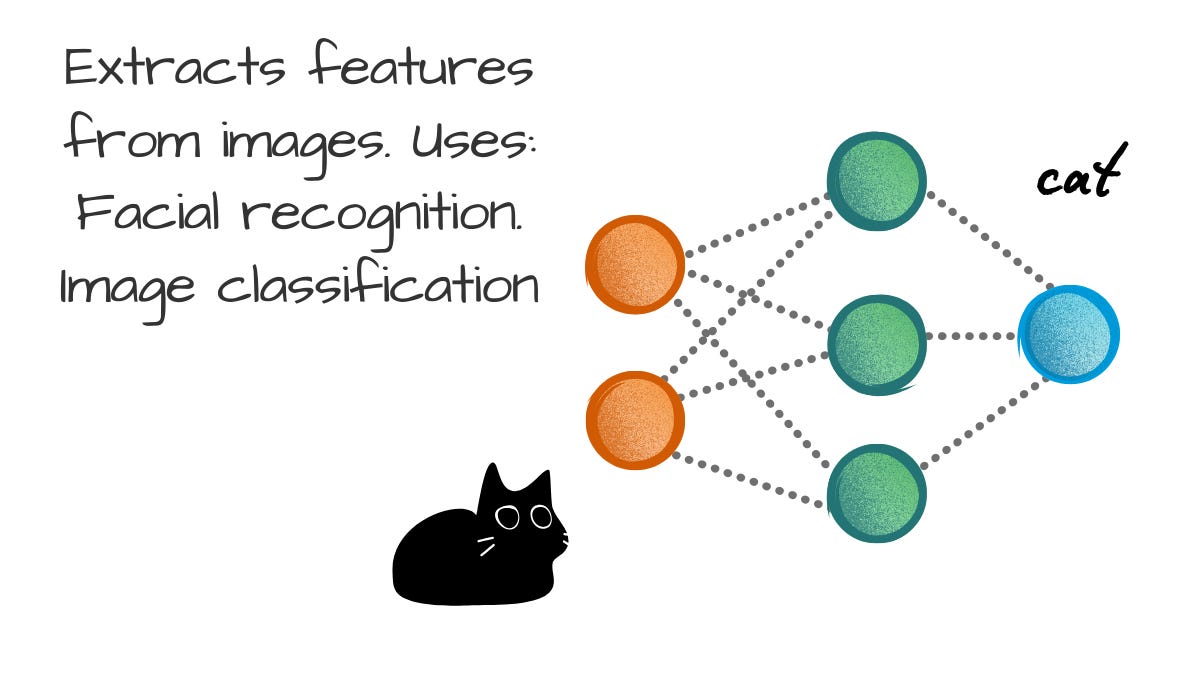
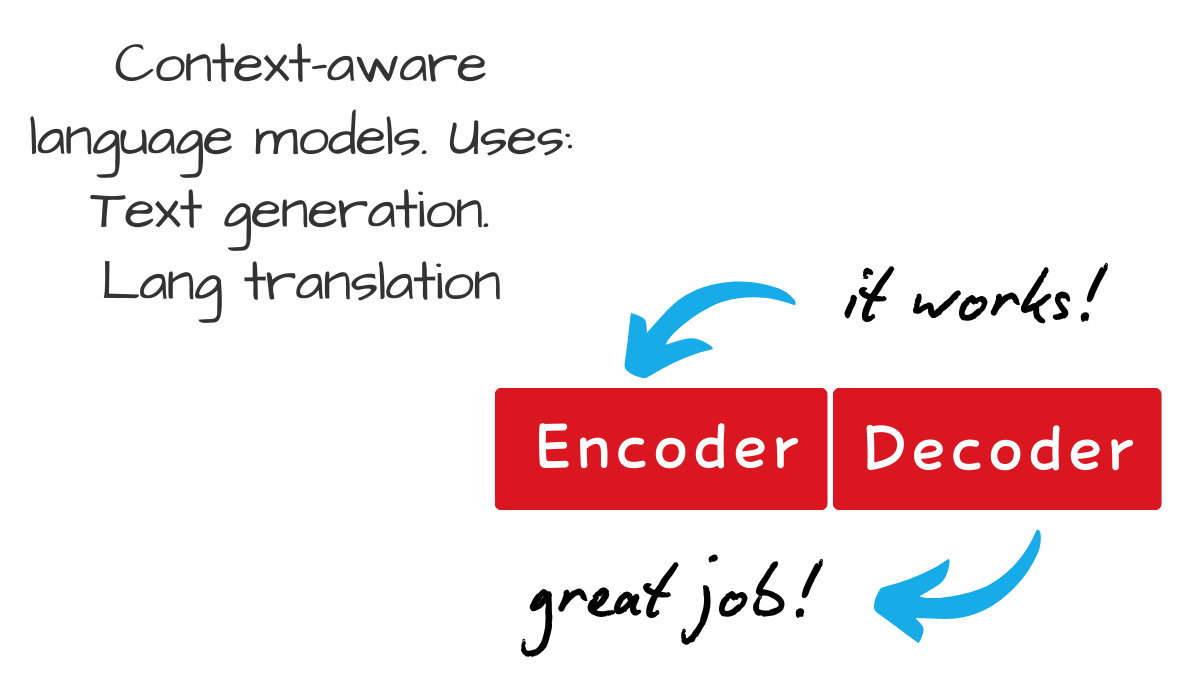
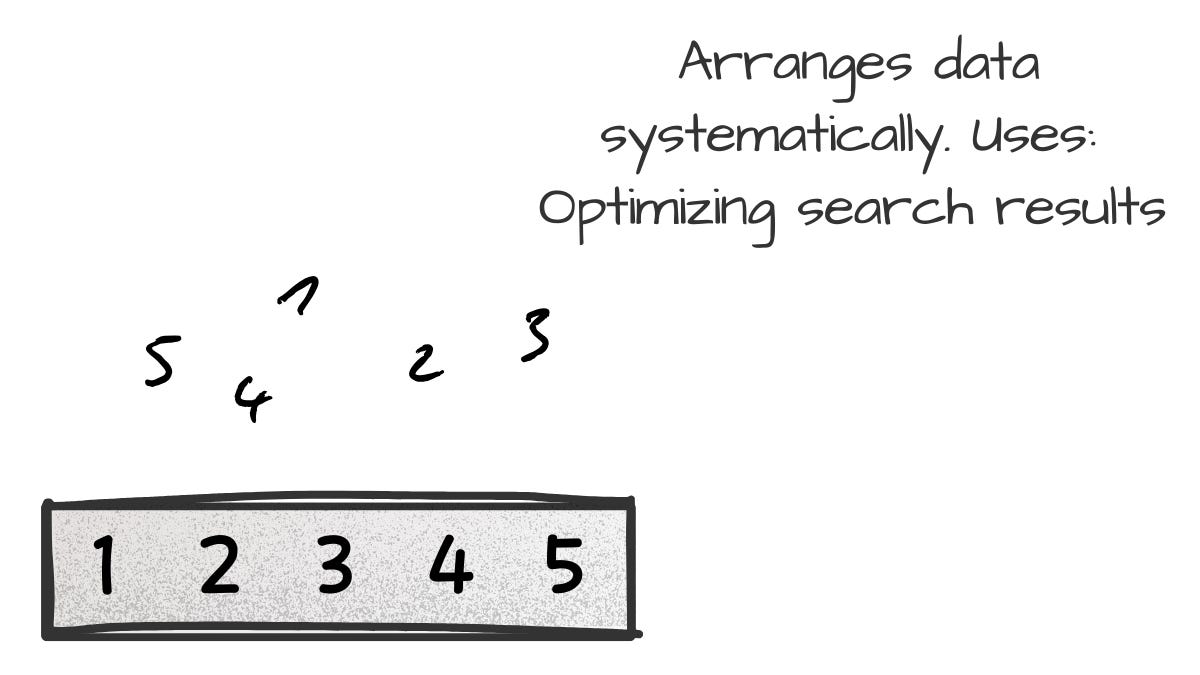


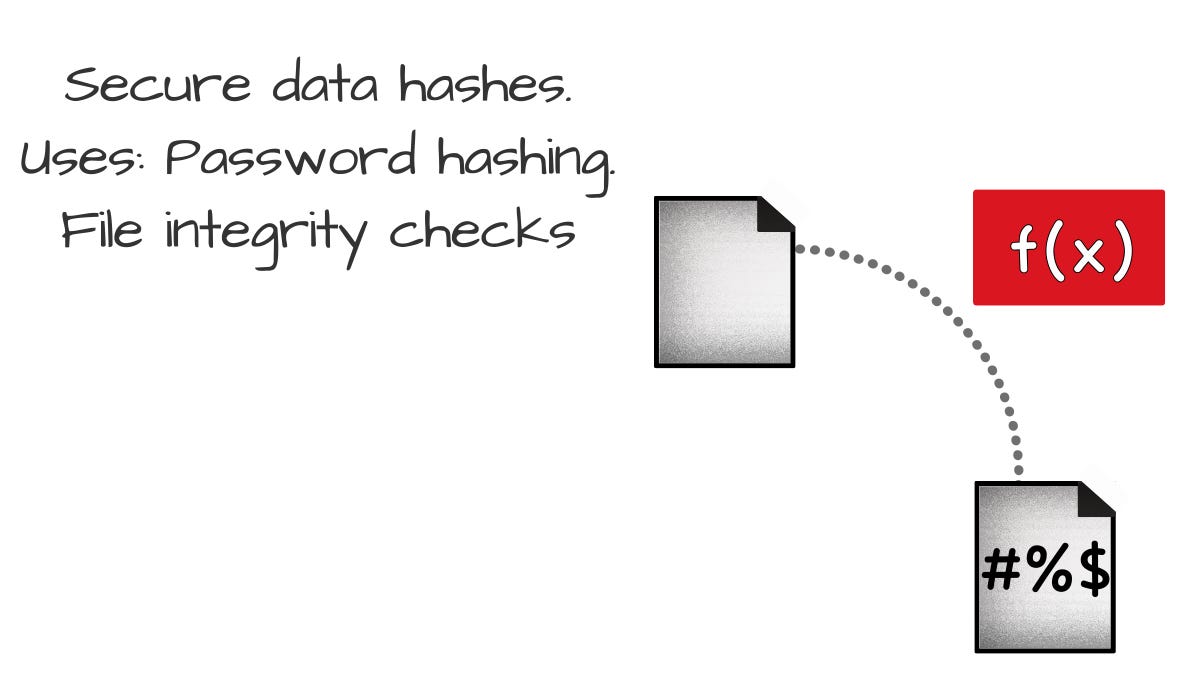
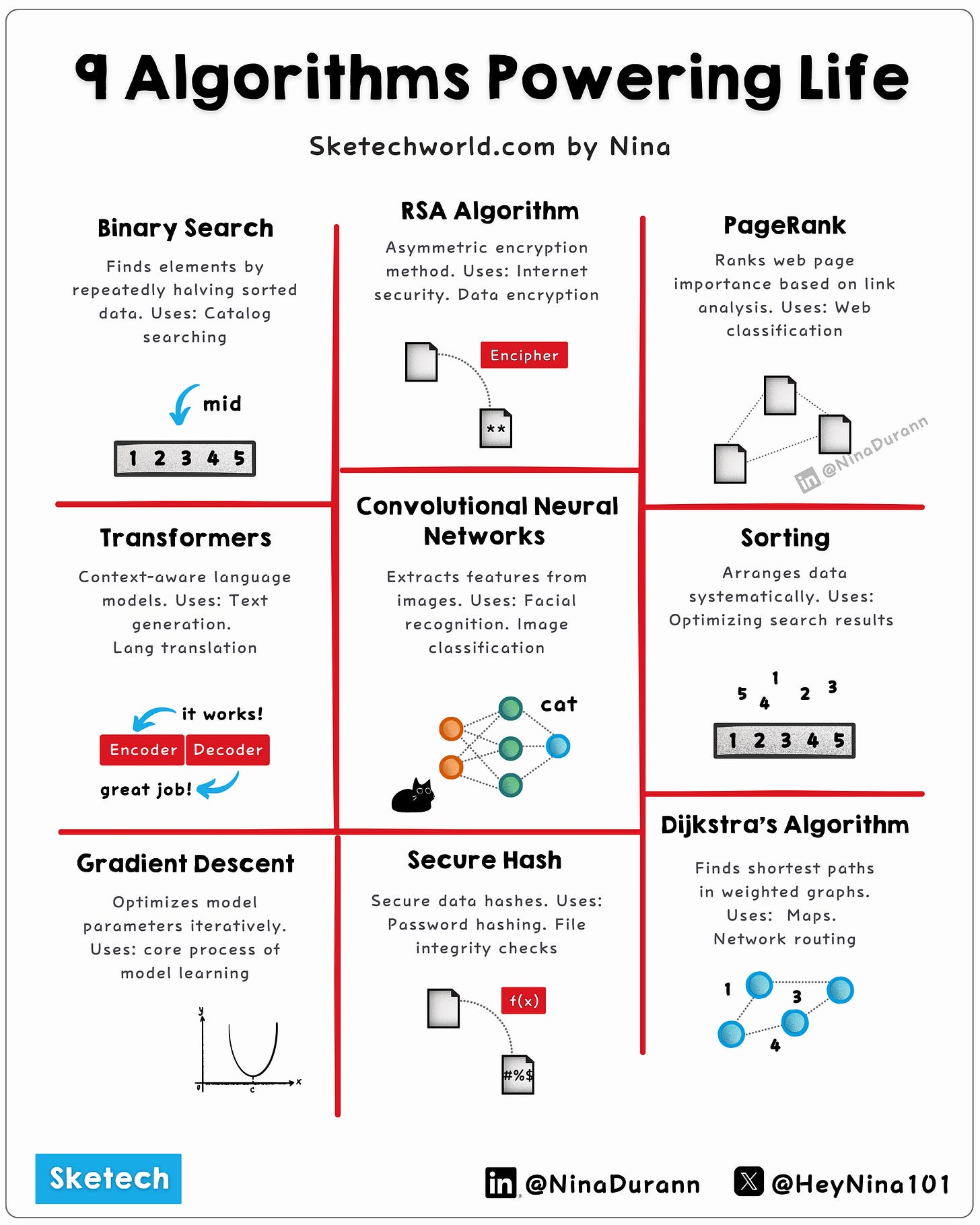

Congrats on the 1K milestone 🔥
Great breakdown @Nina! Thank you for sharing!!